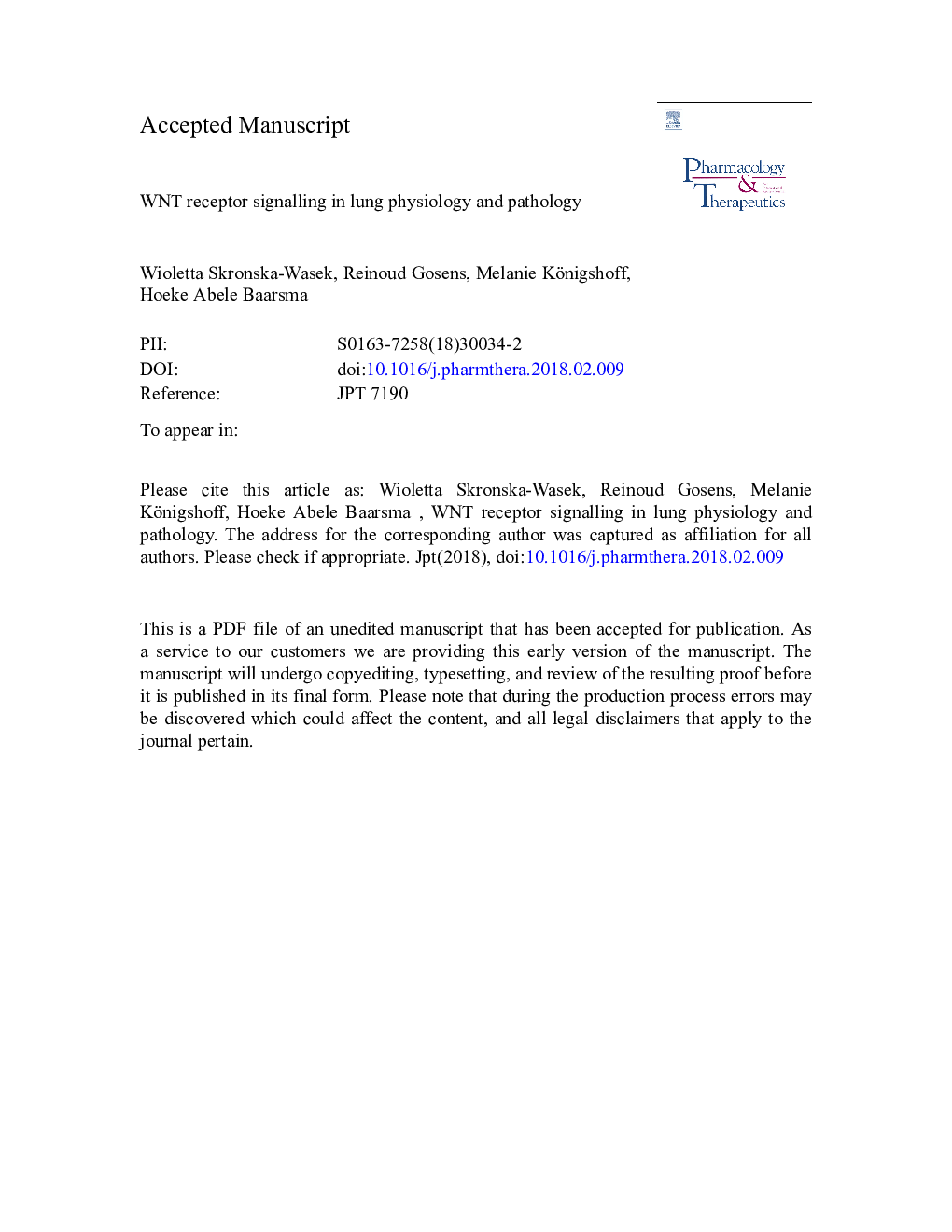| Article ID | Journal | Published Year | Pages | File Type |
|---|---|---|---|---|
| 8536807 | Pharmacology & Therapeutics | 2018 | 72 Pages |
Abstract
The WNT signalling cascades have emerged as critical regulators of a wide variety of biological aspects involved in lung development as well as in physiological and pathophysiological processes in the adult lung. WNTs (secreted glycoproteins) interact with various transmembrane receptors and co-receptors to activate signalling pathways that regulate transcriptional as well as non-transcriptional responses within cells. In physiological conditions, the majority of WNT receptors and co-receptors can be detected in the adult lung. However, dysregulation of WNT signalling pathways contributes to the development and progression of chronic lung pathologies, including idiopathic pulmonary fibrosis (IPF), chronic obstructive pulmonary disease (COPD), asthma and lung cancer. The interaction between a WNT and the (co-)receptor(s) present at the cell surface is the initial step in transducing an extracellular signal into an intracellular response. This proximal event in WNT signal transduction with (cell-specific) ligand-receptor interactions is of great interest as a potential target for pharmacological intervention. In this review we highlight the diverse expression of various WNT receptors and co-receptors in the aforementioned chronic lung diseases and discuss the currently available biologicals and pharmacological tools to modify proximal WNT signalling.
Keywords
LgrCK1GSK-3WntDLCOAXINTAK1FZDfrizzledR-spondinABCCELSR1ATIIPTK7sFRPNLKRNF43T-cell factor/lymphoid enhancer-binding factoralveolar epithelial type II cellRSPOECMNFATSCCATICPIIPFPCPCRDAPCLRP5/6TCF/LEFadenomatous polyposis coliDkkdickkopfinterleukinChronic obstructive pulmonary diseaseCOPDRykcysteine-rich domainCigarette smokeNSCLCNon-small cell lung cancerComposite physiologic indexdiffusion capacity of the lung for carbon monoxidenuclear factor of activated T-cellsidiopathic pulmonary fibrosisPlanar Cell PolarityExtracellular matrixProtein tyrosine kinase 7Axis inhibition proteinSingle nucleotide polymorphismSNPSquamous cell carcinomacasein kinase 1Nemo-like kinaseglycogen synthase kinase-3
Related Topics
Health Sciences
Pharmacology, Toxicology and Pharmaceutical Science
Pharmacology
Authors
Wioletta Skronska-Wasek, Reinoud Gosens, Melanie Königshoff, Hoeke Abele Baarsma,
